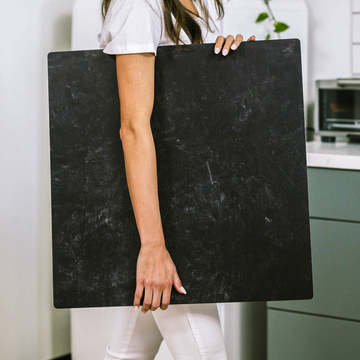Marble surfaces have become a staple in the world of product and food photography, instantly lending an air of sophistication and luxury to any shot. But what truly sets a marble board apart isn’t just its elegant pattern-it’s the invisible scientific magic it brings to the table. Let’s peel back the layers and explore how the choice between real and replica marble affects your photos in ways most photographers overlook.
There’s More to Marble Than Meets the Eye
Most people see a marble board as just a backdrop, but seasoned photographers know it’s much more. Marble’s unique makeup-formed over centuries-means that under studio lighting it behaves unlike any other surface. This “behavior” can reveal itself in subtle reflections, glowing highlights, or even the tiniest details under a macro lens. Knowing what’s happening beneath the surface helps you turn any product into a showstopper.
Real vs. Replica: What’s the Real Difference?
Let’s break down how authentic marble stacks up against modern, high-quality replica boards (like printed PVC or vinyl):
- Real Marble: Marble’s intricate composition scatters light in extraordinary ways. Its natural crystals and uneven surface aren’t just for show-they create depth, soft rolls of highlight, and a gentle luminous glow. In close-up shots, veins and textures become beautifully apparent, making small products feel expansive and rich.
- Replica Boards: These are often made from printed or laminated plastic, designed for durability and convenience. They are much lighter, easier to handle, and can often be double-sided. While the print quality can be outstanding, replicas don’t have the surface depth or complex light diffusion of real marble-meaning reflections are more predictable and textures flatter, especially up close.
The Role of Lighting and Color
Lighting marble is both a science and an art form. Here’s how each surface type responds:
- Real Marble: Offers complex, layered highlights. The slight translucency means side lighting can create a subtle glow and reveal natural color shifts across the surface-excellent for dramatic hero shots and luxury branding.
- Replica Boards: While offering consistency and cleanliness, they can sometimes look a bit flat in direct light. To bring them to life, try lighting from a low angle and using flags or gobos to create soft shadows and break up uniform areas.
Another overlooked detail: color accuracy. Real marble can have gentle pink, blue, or green undertones based on its mineral content, which can influence your photo’s overall tone. Replica boards, on the other hand, rely on printing technology that can shift color slightly under certain lighting-sometimes requiring custom white balance settings to keep your product’s hues true to life.
Workflow, Weight, and Practical Realities
Anyone who’s ever tried to haul a real marble slab into a home studio knows its weight is no joke. Real marble is heavy, fragile, and often expensive. Replica boards are a dream for busy creators: lightweight, portable, and easy to swap in and out between shoots. However, for close-up photography or shots featuring liquids and textures, real marble’s authentic micro-texture can make a difference-the way syrup pools or condensation forms can look more natural and tactile.
Does Authenticity Matter?
Luxury brands and detail-conscious customers can sometimes sense the difference between genuine and synthetic surfaces-even if they can’t put their finger on it. High-resolution and macro photography can reveal subtle “tells” like uniform gloss, printing repeats, or missing texture that mark a backdrop as artificial. For most digital content, though, today’s replica boards (especially from brands like Replica Surfaces) hit the sweet spot between impressive realism and everyday convenience.
Pro Tips for Using Marble Boards
- Light from the Side: Side lighting brings out texture and creates more interesting highlights on both real and replica marble.
- Add Depth with Gobos: Use simple shadow-casting tools to break up flat areas and mimic the complexity of real marble.
- Edit Mindfully: Slightly boost contrast and add a hint of grain when working with printed boards to recreate the nuance of natural stone.
- Dial in Your White Balance: Don’t rely on auto settings-use a custom white balance to counter color shifts from both types of boards.
- Consider Close-Ups Carefully: For ultra-detailed macro work, real marble may offer the edge you need, but creative editing can help bring replicas to life.
Final Thoughts: Your Surface Is Your Story
Whether you shoot on genuine stone or a clever imitation, remember: your surface is more than just a background-it’s an optical partner in every photograph. Understanding the science and subtle cues of marble helps you create images that resonate, whether you’re crafting a brand campaign or updating your Etsy shop. With the right lighting and a dose of technical know-how, you can make any marble board work for you-and turn every product photo into something truly striking.



